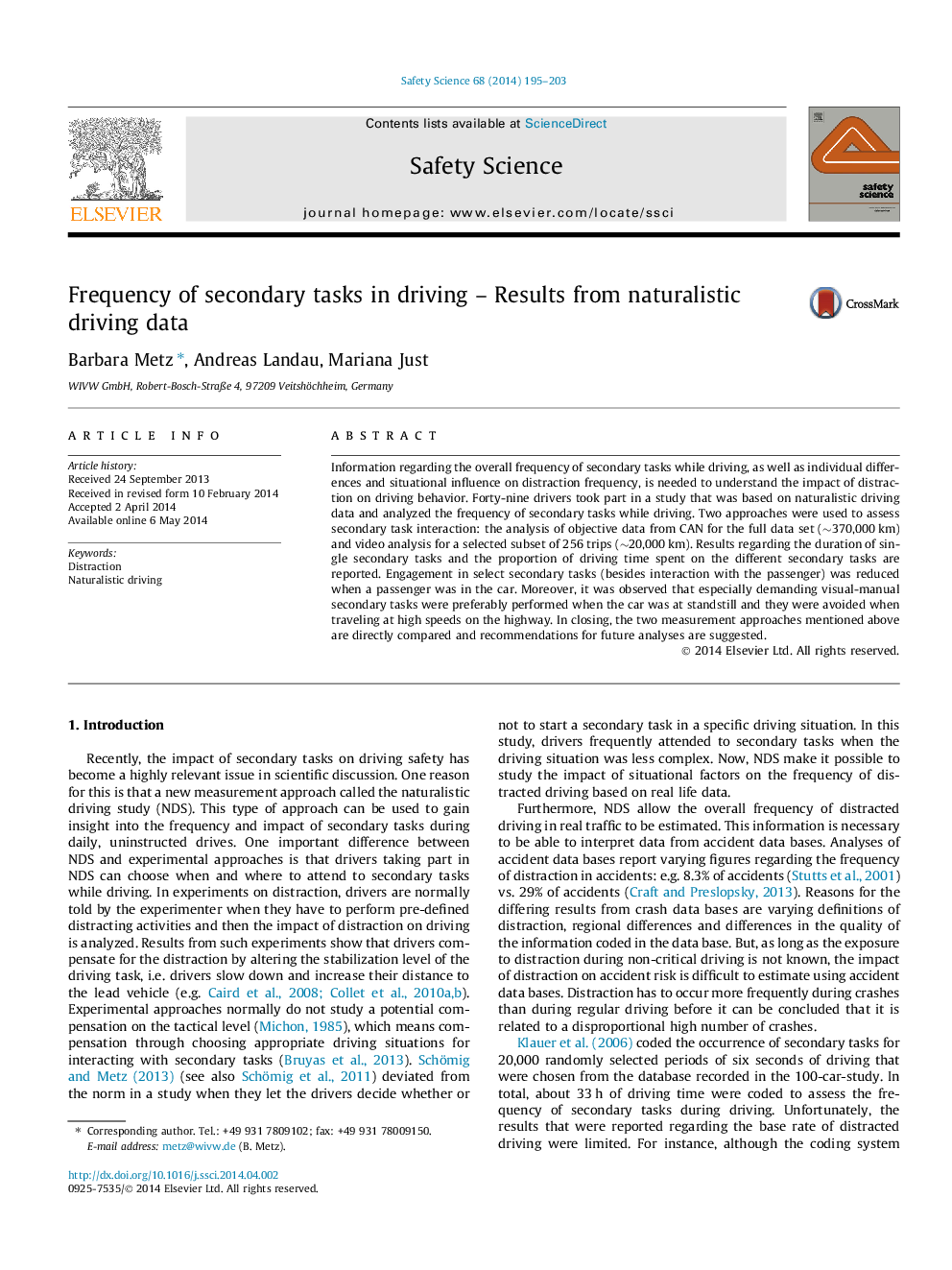| Article ID | Journal | Published Year | Pages | File Type |
|---|---|---|---|---|
| 6976253 | Safety Science | 2014 | 9 Pages |
Abstract
Information regarding the overall frequency of secondary tasks while driving, as well as individual differences and situational influence on distraction frequency, is needed to understand the impact of distraction on driving behavior. Forty-nine drivers took part in a study that was based on naturalistic driving data and analyzed the frequency of secondary tasks while driving. Two approaches were used to assess secondary task interaction: the analysis of objective data from CAN for the full data set (â¼370,000Â km) and video analysis for a selected subset of 256 trips (â¼20,000Â km). Results regarding the duration of single secondary tasks and the proportion of driving time spent on the different secondary tasks are reported. Engagement in select secondary tasks (besides interaction with the passenger) was reduced when a passenger was in the car. Moreover, it was observed that especially demanding visual-manual secondary tasks were preferably performed when the car was at standstill and they were avoided when traveling at high speeds on the highway. In closing, the two measurement approaches mentioned above are directly compared and recommendations for future analyses are suggested.
Keywords
Related Topics
Physical Sciences and Engineering
Chemical Engineering
Chemical Health and Safety
Authors
Barbara Metz, Andreas Landau, Mariana Just,
